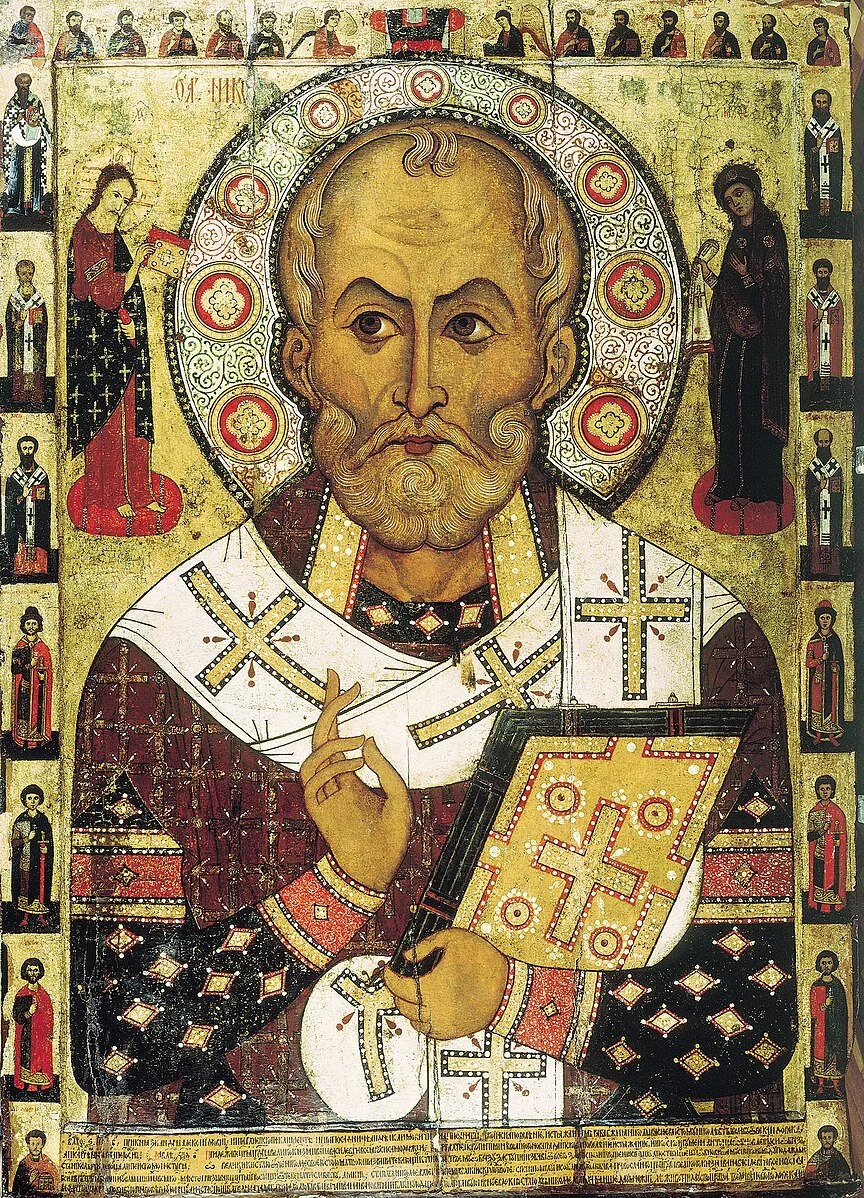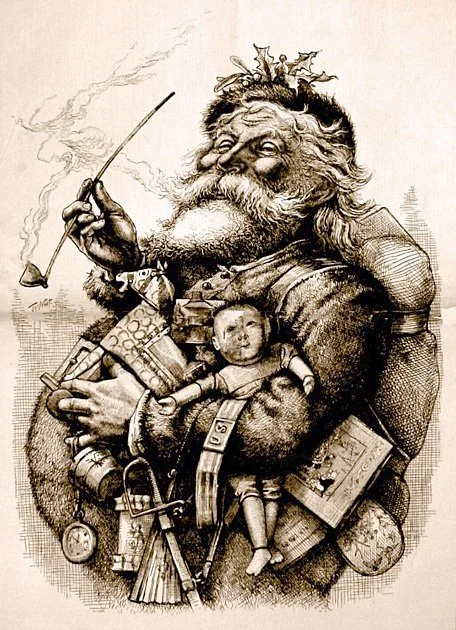Santa's Mystical Journey: Tracing His Roots from Paganism to Pop Culture
Santa Claus, a figure synonymous with the winter holiday season, has an intriguing history that intertwines Christian traditions with ancient pagan roots.
St. Nicholas as he appears on a Russian icon dated to 1294 from Lipnya Church of St. Nicholas in Novgorod Source
From Saint Nicholas to Santa Claus: The Christian Influence
The most direct lineage of Santa Claus can be traced back to Saint Nicholas, a 4th-century Christian bishop from Myra (modern-day Turkey). Known for his generosity and the anonymous giving of gifts, his legend grew over centuries. December 6th, his feast day, became a celebratory occasion where children were bestowed gifts in his honor.
In the 16th century, as Europe became more Protestant, the veneration of saints like Nicholas waned. However, the tradition of gift-giving persisted. In some countries, the figure of Saint Nicholas morphed into 'Father Christmas' or 'Christkind'. By the 19th century, these figures started to be associated with the Christmas holiday.
Pagan Influences: The Roots in Winter Celebrations
While the Christian traditions shaped the Santa Claus we know today, his origins also dip into ancient pagan customs. The celebration of the winter solstice, marking the shortest day and longest night of the year, was significant in many pre-Christian cultures.
Yule: In Norse mythology, the celebration of Yule, or the winter solstice, involved the god Odin, who was depicted as an elderly man with a long, white beard, perhaps influencing Santa’s appearance.
Saturnalia: The ancient Roman festival of Saturnalia, dedicated to the god Saturn, was a time of mirth and gift-giving. Elements of this festival, like the joy and generosity, found their way into the Christmas traditions.
Thomas Nast's most famous drawing, "Merry Old Santa Claus", from 1881
The Modern Santa Claus: A Melting Pot of Traditions
The image of Santa Claus as a jolly man in a red suit was popularized by the 19th and 20th-century American media. This portrayal owes much to the poem “A Visit from St. Nicholas” (also known as “The Night Before Christmas”) by Clement Clarke Moore and illustrations by Thomas Nast. This depiction was further cemented by Haddon Sundblom’s advertisements for Coca-Cola in the 1930s.
Santa Claus Around the World
Today, Santa Claus has various incarnations worldwide, reflecting a blend of local cultures and the overarching Christian and pagan influences.
Shamanistic Traditions
Siberian Shamanism and Reindeer: In the shamanistic traditions of Siberian and Sami cultures, reindeer play a significant role. These nomadic people, inhabiting regions where reindeer naturally live, have long held these animals in high esteem. Reindeer were essential for survival in harsh climates and were revered in cultural mythology and shamanistic rituals.
Amanita Muscaria: The 'Santa Mushroom': The Amanita muscaria mushroom, known for its distinctive red cap with white spots, bears a striking resemblance to the colors often associated with Santa Claus. In some shamanistic cultures, these mushrooms were consumed for their hallucinogenic properties, believed to facilitate spiritual journeys. Shamans, or spiritual leaders, often used them in rituals around the time of the winter solstice.
The Shaman's Journey and the Modern Santa's Flight: The consumption of Amanita muscaria by shamans was said to lead to visionary experiences, including sensations of flying. This bears a curious resemblance to the modern story of Santa Claus flying through the sky with his reindeer-led sleigh. Additionally, the practice of shamans entering homes through the chimney is echoed in Santa's legendary entry method on Christmas Eve.
In Various Cultures: A Blend of Shamanism and Local Traditions
Sámi People and 'Joulupukki': In the Sámi culture of northern Scandinavia and parts of Russia, where shamanistic traditions were strong, 'Joulupukki', a figure similar to Santa, is a central part of Christmas celebrations. This figure may have been influenced by both shamanistic practices and later Christian traditions.
Russian Ded Moroz: In Russian folklore, 'Ded Moroz' or 'Father Frost' is accompanied by a granddaughter, Snegurochka. This figure, traveling in a sleigh drawn by horses (or in some stories, reindeer), may also have origins linked to shamanistic traditions, intertwined with Slavic pagan and later Christian influences.
From the Christian Saint Nicholas to ancient pagan traditions, and finally to the modern-day jolly figure in red, Santa’s evolution is an interesting example of how stories and traditions morph and adapt, borrowing from various cultures and moving through time and space, to create something almost universally beloved and enduring.
The Santa Claus mythos, when examined through the lens of shamanistic traditions, is a meeting of global cultural and spiritual practices. From the reindeer's significance in Siberian shamanism to the visionary Amanita muscaria mushroom, these elements contribute to a deeper understanding, revealing Santa Claus as not just a Christian or pagan figure but as a symbol that is ever more layered, emerging from a rich tapestry of global mythologies and beliefs to become the iconic figure of Christmas celebration worldwide.




